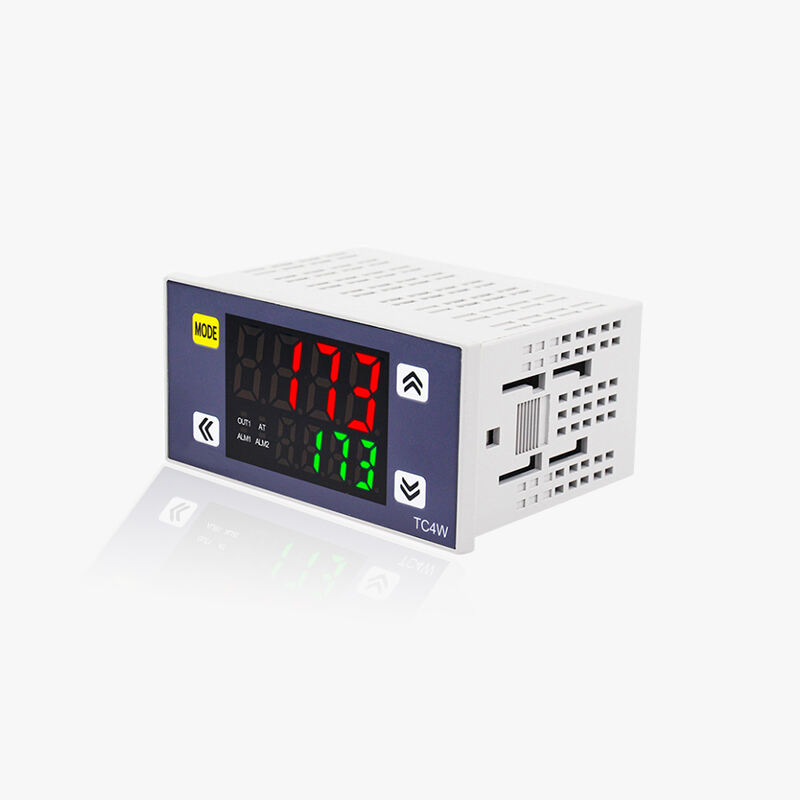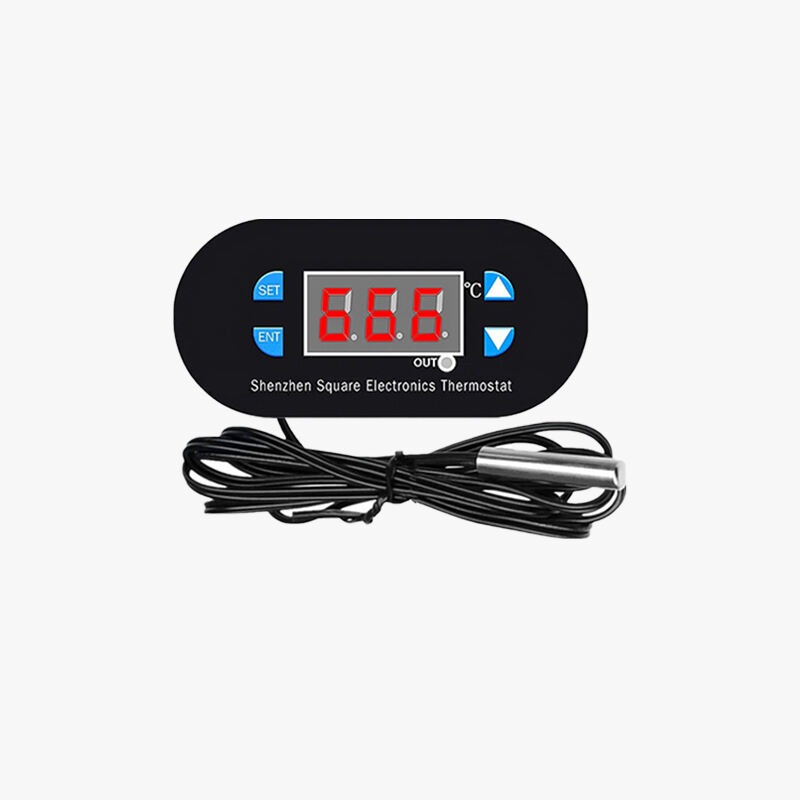Transforming Industrial Processes with Precision Temperature Management
In today's manufacturing landscape, maintaining precise temperature control isn't just a luxury—it's an absolute necessity. Modern industrial processes demand exceptional accuracy, consistency, and reliability in temperature management to ensure product quality, optimize energy efficiency, and maintain regulatory compliance. A digital temperature controller serves as the cornerstone of effective thermal management, offering unprecedented control over heating and cooling processes across diverse applications.
The evolution from traditional analog controls to sophisticated digital systems has revolutionized how industries approach temperature regulation. These advanced controllers provide real-time monitoring, precise adjustments, and data logging capabilities that were previously unimaginable. As manufacturing processes become increasingly complex, the role of accurate temperature control becomes even more critical in maintaining operational excellence.
Core Benefits of Digital Temperature Control Systems
Enhanced Precision and Accuracy
Digital temperature controllers offer remarkable precision, typically achieving accuracy within ±0.1°C. This level of control is essential in sensitive processes such as pharmaceutical manufacturing, food processing, and semiconductor production. The ability to maintain such tight temperature tolerances ensures consistent product quality and reduces waste from temperature-related defects.
The advanced algorithms in modern controllers continuously monitor and adjust temperature parameters, responding to even minute variations. This real-time adjustment capability helps prevent temperature overshooting or undershooting, common issues with less sophisticated control systems that can lead to product inconsistencies or process inefficiencies.
Energy Efficiency and Cost Savings
Implementing a digital temperature controller can significantly reduce energy consumption by optimizing heating and cooling cycles. These systems utilize sophisticated PID (Proportional-Integral-Derivative) control algorithms to minimize temperature fluctuations and maintain setpoints with minimal energy input.
The cost savings extend beyond mere energy efficiency. By preventing temperature excursions and maintaining optimal process conditions, these controllers reduce product waste, minimize equipment wear, and decrease maintenance requirements. Many users report energy savings of 15-30% after upgrading to digital temperature control systems.

Advanced Features and Functionality
Smart Integration Capabilities
Modern temperature controllers seamlessly integrate with existing industrial automation systems through various communication protocols. This connectivity enables real-time data sharing, remote monitoring, and centralized control of multiple process parameters. The ability to interface with SCADA systems and IoT platforms provides unprecedented visibility into thermal processes.
Integration capabilities extend to mobile devices and cloud-based systems, allowing operators to monitor and adjust temperature settings from anywhere. This flexibility proves invaluable in maintaining continuous operations and responding quickly to process deviations.
Data Logging and Analysis
Digital temperature controllers excel in data collection and analysis capabilities. These systems automatically log temperature data, process variables, and control actions, creating comprehensive records for quality assurance and regulatory compliance. The ability to analyze historical data helps identify trends, optimize processes, and predict potential issues before they occur.
Advanced analytics features enable operators to generate detailed reports, track energy usage patterns, and identify opportunities for process improvement. This data-driven approach to temperature control supports continuous improvement initiatives and helps justify investment decisions.
Implementation and Best Practices
System Selection and Sizing
Choosing the right temperature controller requires careful consideration of process requirements, environmental conditions, and control objectives. Factors such as temperature range, response time, and accuracy requirements must be evaluated. Additionally, the controller's input/output capabilities, communication options, and user interface should align with operational needs.
Proper sizing ensures optimal performance and prevents issues such as temperature cycling or inadequate response times. Working with experienced suppliers helps ensure appropriate controller selection and system design for specific applications.
Installation and Configuration
Successful implementation of a temperature controller depends on proper installation and configuration. This includes sensor placement, wiring considerations, and careful tuning of control parameters. Professional installation ensures optimal performance and reliability while minimizing the risk of operational issues.
Configuration should include setting appropriate alarm limits, defining control strategies, and establishing communication parameters. Thorough testing and validation ensure the system meets performance requirements before full deployment.
Future Trends in Temperature Control
Artificial Intelligence Integration
The future of temperature control systems lies in artificial intelligence and machine learning capabilities. These advanced technologies enable predictive maintenance, autonomous optimization, and adaptive control strategies. AI-powered controllers can learn from historical data to improve process efficiency and anticipate potential issues.
The integration of AI also facilitates more sophisticated energy management strategies, helping organizations achieve their sustainability goals while maintaining optimal process control.
Enhanced Connectivity and IoT Integration
As Industry 4.0 continues to evolve, temperature controllers are becoming increasingly connected through IoT platforms. This connectivity enables advanced features such as predictive analytics, remote diagnostics, and automated maintenance scheduling. The ability to access and analyze process data from anywhere supports more efficient operations and faster problem resolution.
Future developments will likely include enhanced cybersecurity features, improved cloud integration, and more sophisticated mobile control capabilities.
Frequently Asked Questions
How does a digital temperature controller improve process efficiency?
A digital temperature controller enhances process efficiency through precise temperature regulation, advanced algorithms for optimal control, reduced energy consumption, and comprehensive data logging capabilities. These features result in improved product quality, reduced waste, and lower operating costs.
What maintenance is required for digital temperature control systems?
Digital temperature controllers require minimal maintenance compared to analog systems. Regular calibration checks, sensor inspection, and software updates are typically sufficient. It's recommended to perform system diagnostics periodically and maintain backup configurations for critical applications.
Can existing processes be upgraded with digital temperature controllers?
Yes, most processes can be upgraded to digital temperature control systems. The upgrade typically involves replacing the existing controller, ensuring compatibility with existing sensors and actuators, and configuring the new system. Professional assessment helps determine the most appropriate upgrade path and potential process improvements.

